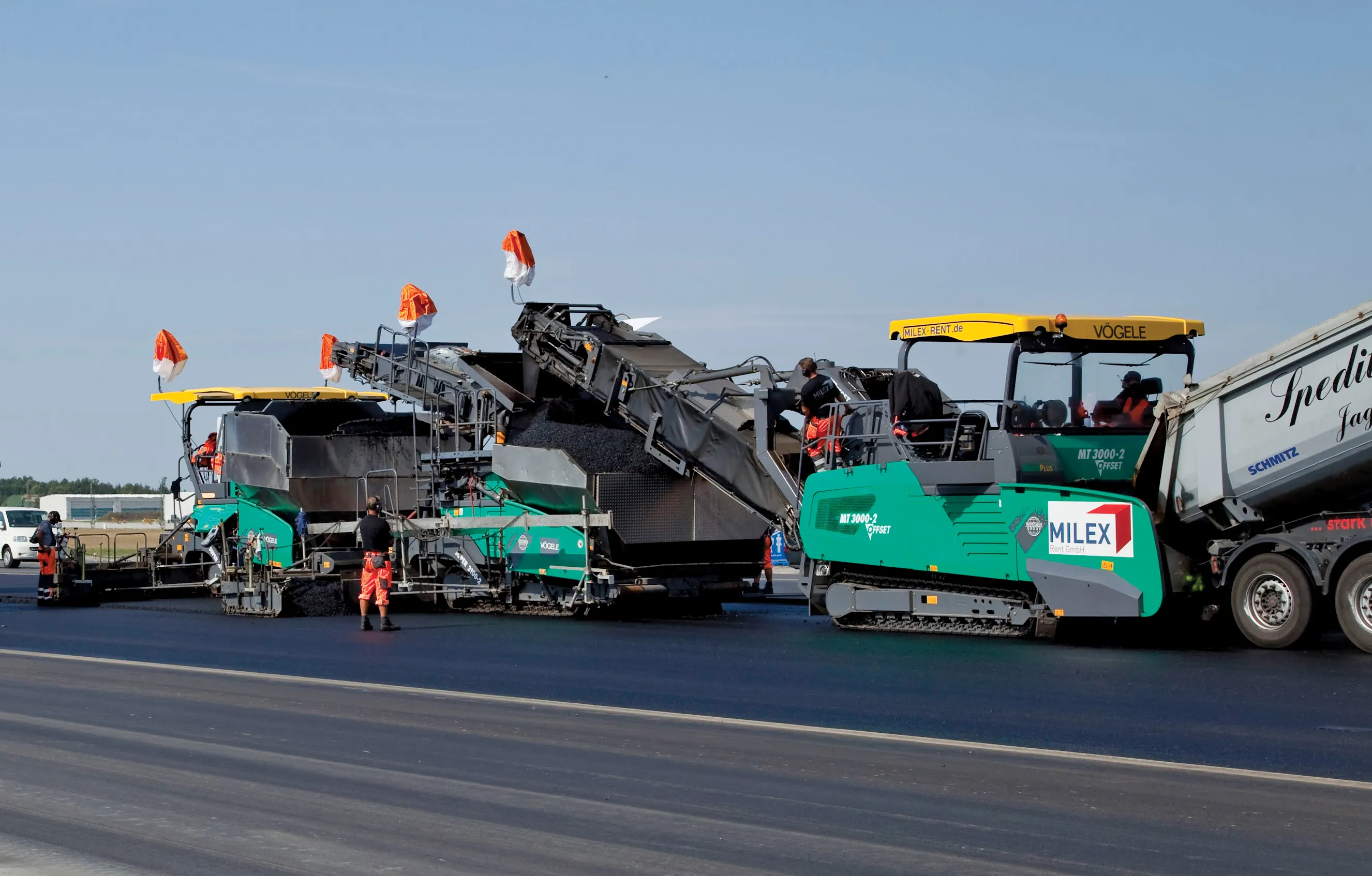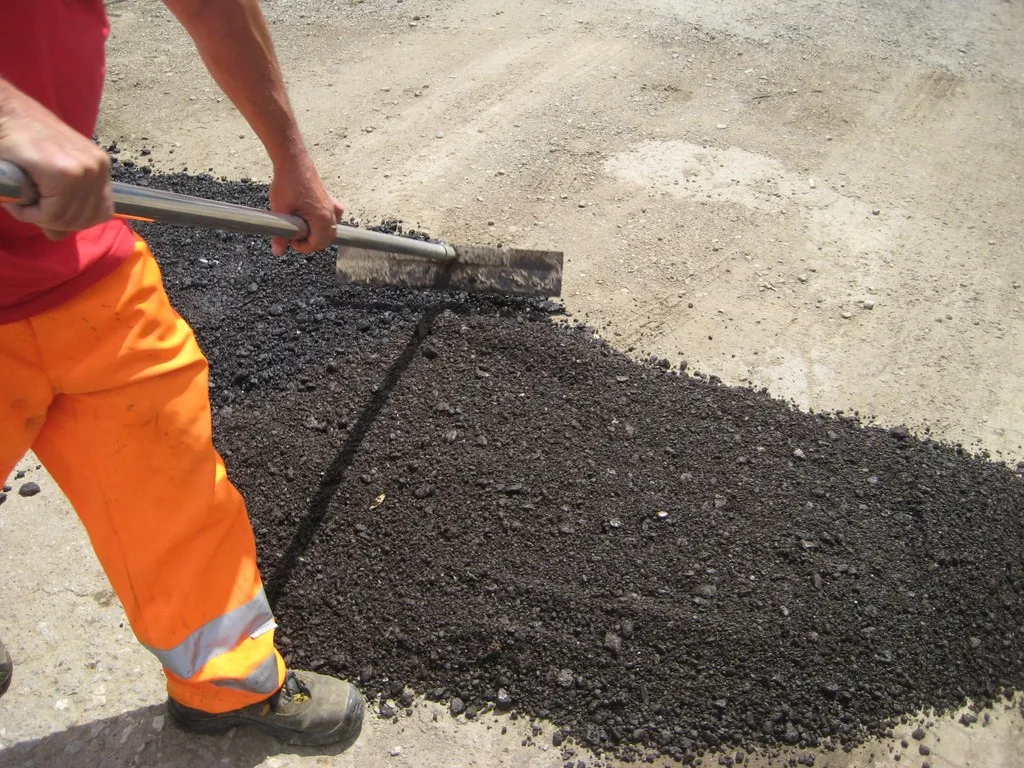Asphalt rubber is a medium that solves the problem of waste tyres and at the same time produces a material that is suitable for highway use.
February 28, 2012
Read time: 4 mins
Asphalt rubber is a medium that solves the problem of waste tyres and at the same time produces a material that is suitable for highway use. In the US alone it is estimated that each year around 300 million used tyres become available.
VSS (2852 Valley Slurry Seal), in conjunction with its sister company International Surfacing Systems (ISS), has been one of the modern innovators of the process, which was developed in the 1960s.
"When we started putting tyre rubber in as a modifier with the liquid asphalt cement, we weren't doing it because we were recycling. It is because when the tyre rubber is combined with the liquid asphalt cement the end result is asphalt-rubber binder, which has intrinsic characteristics, is ideal for rehabilitating worn roadways, increasing longevity of road surfaces, producing added vehicle traction and therefore improving road safety and reducing traffic noise," says Jeff Smith, assistant marketing director and technical director for ISS.
Typically, asphalt rubber has a minimum of 15% tyre rubber or crumb rubber modifier (CRM), and the higher this percentage the more viscous the material, meaning it behaves better in a pavement preservation or construction application, and afterwards, especially when considering long term performance.
Tyre rubber contains chemical elements that can affect the quality and behaviour of the final asphalt mix. Scrap tyres are ground up and the steel and fabric removed: what remains is crumb rubber, containing all of the chemicals that tyre manufacturers have created to produce a long wear tyre.
"All of these beneficial components are in the tyre rubber. When we mix that CRM with the liquid asphalt cement, at a very high temperature for a certain period of time, the CRM and asphalt cement combination or resulting asphalt rubber binder that's being created from this blending process reacts or interacts, and we achieve the improved physical properties normally associated with this type of binder," says Smith.
This means that the various asphalt rubber systems that are applied to a road surface contain all the benefits of the tyre rubber and the asphalt, becoming something extra when used as a hot mix paving medium or sprayed on the surface of the roadway for a chip seal application.
It is said that asphalt rubber becomes very resistant to ageing, often maintaining a healthy life for over a decade with some asphalt rubber pavement preservation applications still performing after 20 years.
"We design the binder for cold or hot climates. These binders are formulated for each individual project," says Smith, whose company has been helped in the field by the Mobile Asphalt Rubber Blending System built by360 VSS Macropaver. ISS worked with the equipment manufacturer to create three pieces of equipment that blend custom asphalt rubber on site.
The machines can manufacture asphalt rubber binder materials for chip seals or stress absorbing membrane (SAM), stress-absorbing membrane interlayer (SAMI), and open-graded or gap-graded asphalt concrete, and can also produce other modified binders that have combinations of SBS polymer and CRM as the modifying medium with percentages ranging up to 22%.
All these specialised binder materials can be blended in the field at production rates ranging from 15 to 75tonnes/hr.
During the modified binder production process asphalt moves through the heat exchanger to a high shear blender, and crumb rubber or polymer or a combination of both is conveyed into the asphalt blender. The extender oil tank also feeds the mixing tank if oils are added to the binder.
After the material is mixed it goes through the discharge pump into the reaction trailer and material is pumped into one compartment so it can react, while the another compartment supplies the asphalt plant, thus allowing for continuous operation of the plant as one side can be charged while the other is being emptied. The binder is then discharged to the hot mix asphalt plant to combine with the aggregates.
"This product reduces surface noise, improves skid resistance and helps reduce spray in wet weather," says Mancero.
The company produces a number of plants including a 45tonnes/hr unit; a skid-mounted machine capable of producing 15tonnes/hr and a wheel-mounted machine also with 15tonnes/hr.
VSS (
"When we started putting tyre rubber in as a modifier with the liquid asphalt cement, we weren't doing it because we were recycling. It is because when the tyre rubber is combined with the liquid asphalt cement the end result is asphalt-rubber binder, which has intrinsic characteristics, is ideal for rehabilitating worn roadways, increasing longevity of road surfaces, producing added vehicle traction and therefore improving road safety and reducing traffic noise," says Jeff Smith, assistant marketing director and technical director for ISS.
Typically, asphalt rubber has a minimum of 15% tyre rubber or crumb rubber modifier (CRM), and the higher this percentage the more viscous the material, meaning it behaves better in a pavement preservation or construction application, and afterwards, especially when considering long term performance.
Tyre rubber contains chemical elements that can affect the quality and behaviour of the final asphalt mix. Scrap tyres are ground up and the steel and fabric removed: what remains is crumb rubber, containing all of the chemicals that tyre manufacturers have created to produce a long wear tyre.
"All of these beneficial components are in the tyre rubber. When we mix that CRM with the liquid asphalt cement, at a very high temperature for a certain period of time, the CRM and asphalt cement combination or resulting asphalt rubber binder that's being created from this blending process reacts or interacts, and we achieve the improved physical properties normally associated with this type of binder," says Smith.
This means that the various asphalt rubber systems that are applied to a road surface contain all the benefits of the tyre rubber and the asphalt, becoming something extra when used as a hot mix paving medium or sprayed on the surface of the roadway for a chip seal application.
It is said that asphalt rubber becomes very resistant to ageing, often maintaining a healthy life for over a decade with some asphalt rubber pavement preservation applications still performing after 20 years.
"We design the binder for cold or hot climates. These binders are formulated for each individual project," says Smith, whose company has been helped in the field by the Mobile Asphalt Rubber Blending System built by
The machines can manufacture asphalt rubber binder materials for chip seals or stress absorbing membrane (SAM), stress-absorbing membrane interlayer (SAMI), and open-graded or gap-graded asphalt concrete, and can also produce other modified binders that have combinations of SBS polymer and CRM as the modifying medium with percentages ranging up to 22%.
All these specialised binder materials can be blended in the field at production rates ranging from 15 to 75tonnes/hr.
'Lot of benefits'
According to Cecilia Mancero, vice president international sales with Ecopath, which produces rubber blending plants and is looking to further promote its products in the UK and Europe, there are a lot of benefits to the product. The technology has already been used in Sweden, the Czech Republic and Poland, among other countries.During the modified binder production process asphalt moves through the heat exchanger to a high shear blender, and crumb rubber or polymer or a combination of both is conveyed into the asphalt blender. The extender oil tank also feeds the mixing tank if oils are added to the binder.
After the material is mixed it goes through the discharge pump into the reaction trailer and material is pumped into one compartment so it can react, while the another compartment supplies the asphalt plant, thus allowing for continuous operation of the plant as one side can be charged while the other is being emptied. The binder is then discharged to the hot mix asphalt plant to combine with the aggregates.
"This product reduces surface noise, improves skid resistance and helps reduce spray in wet weather," says Mancero.
The company produces a number of plants including a 45tonnes/hr unit; a skid-mounted machine capable of producing 15tonnes/hr and a wheel-mounted machine also with 15tonnes/hr.









